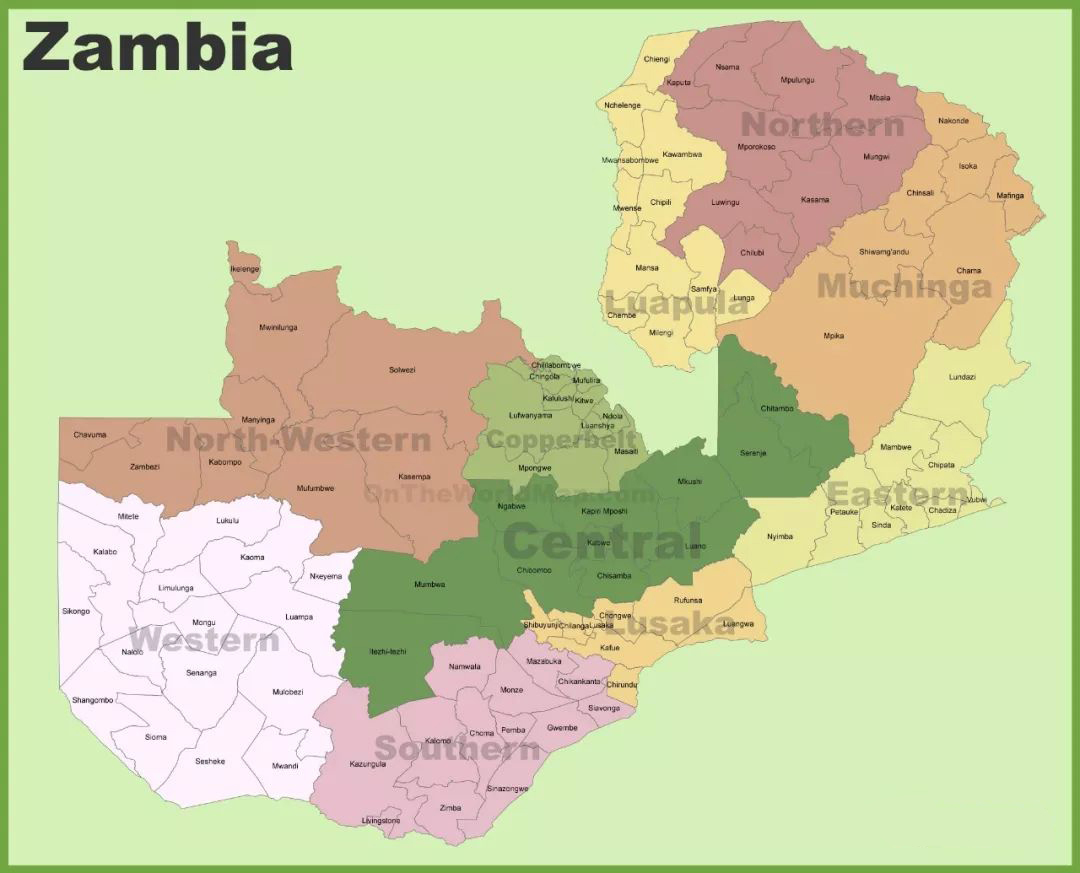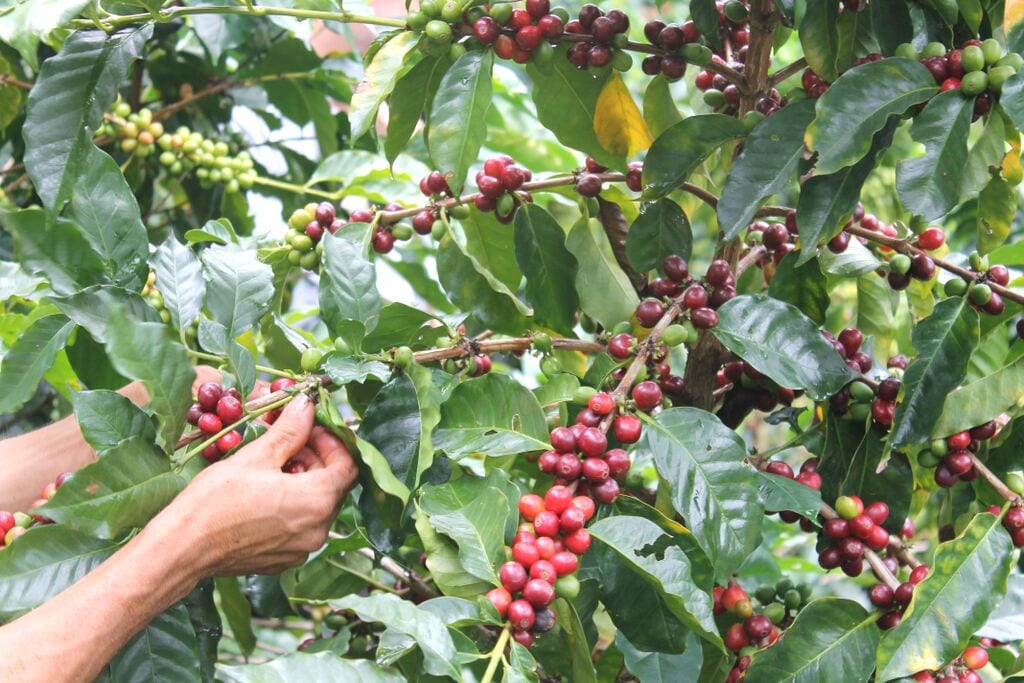Zambian Cates and Senya Coffee Manor introduce the flavor of Zambian honey-treated coffee
Subregion: northern province
Farm name: Kateshi & Isanya Estates
Processing: honey treatment
Qualification Certification: rainforest Alliance
Plant variety: Arabica
Coffee grade: ZMB CA WA HP
Altitude: 1300-1700m
The specially processed honey-processed coffee comes from Isanya and Kateshi estates in Zambia's northern province. This season, honey processing microbatches from Isanya Manor ranked second in the 2019 Zambian Taste Competition and fourth in the African regional competition, competing with winners from other sources.
Production area introduction
The northern province of Zambia is bordered by Tanzania in the east and the Democratic Republic of the Congo in the north. It also occupies the southern shore of Lake any Nika, the longest freshwater lake in the world and the largest in Africa by volume. The northern province, which is relatively close to the equator and at a high altitude, is the best condition for growing Arabica coffee in Zambia (Mafinga Hills is the highest point in the country, with 2300 masl). The local economy is dominated by agriculture, and coffee is the main cash crop, as well as self-sufficient crops such as corn, millet, peanuts and beans. The mountainous terrain and lack of transport infrastructure make work in the region challenging and is one of the most needed areas for investment and development that the coffee industry can bring.

The processing of ancient volcanic soil and honey helps to produce the complex flavor of this coffee. This is a place worth exploring in the country, where there is thunderous smoke. Long before Dr Livingston arrived at Victoria Falls in the name of the Queen, people who have lived in this natural world spectacle for generations have better called it "thunderous smoke". The waterfall flows straight into the Zambezi River and flows eastward to Mozambique. But before the river crosses, turn left and drive north into the Luangwa River. You will cross biodiversity-rich lands, including the world's largest hippopotamus concentration. As the river winds and the elevation rises, you will reach the Mafinga Plateau and Zambia's largest coffee-growing area, which extends to the border with Tanzania.
Introduction to the manor
Kateshi and Isanya Cafe are located in 1300 and 1650 masl, respectively, in the northern province of Zambia. In total, these estates cover an area of 2438 hectares, of which 1277 hectares are planted with coffee and 1161 hectares are dedicated protected areas and buffer zones. Both wineries are certified by the Rainforest Alliance, Utz and 4C, and grow a variety of varieties, including Catimor 129 and other experimental varieties.
These estates are also involved in many social activities.
-Olam sponsors a primary and secondary school at Kateshi Manor, which currently serves 1147 students in the surrounding villages.
More than 20 miles from the nearest health station, the provision of health care to communities near Kateshi Manor is often not possible. In response, Oran built a health clinic at the Kateshi estate to provide basic medical care for 4120 members of the community free of charge. Staff estimate that the existence of the clinic can save an average of 10 lives per month.
These estates work with the Water Resources Authority and development organizations such as GIZ and SNV to reduce water risks and ensure safe drinking water in the Chambeshi catchment.
To empower local women, Kateshi is the first and only one to employ women as traditionally male-dominated cafes, such as tractor driving and large equipment operations.
Unsustainable forest use in the region led to soil erosion, land degradation and the Lucupa River trunk in 2016. Oran launched an afforestation campaign to provide locals with sustainably produced firewood to protect and restore native ecosystems.

Treatment process
Harvesting is done selectively by hand. The picked cherries are then manually removed twice before pulping to remove any immature or overripe cherries. Honey-treated coffee uses a special pulper, which has been broken in advance to avoid cross-contamination in other batches. After pulping, the coffee that still retains its sugary mucus is immediately moved to a special African fluffing bed and a fine net is used to keep the mucus in the maximum airflow. The sunshade net protects against sunlight during the hottest time of the day. Roast coffee carefully throughout the day to prevent caking and excessive fermentation and to ensure a consistent drying process. According to the environmental conditions, the parchment with honey was dried for 9-14 days, and then transported to a dry mill for secondary processing.
Important Notice :
前街咖啡 FrontStreet Coffee has moved to new addredd:
FrontStreet Coffee Address: 315,Donghua East Road,GuangZhou
Tel:020 38364473
- Prev

Introduction to the kiss of the god of the moon in the new Panamanian season is the Spring Eye Manor has a better flavor of rosy summer when it is young?
Producing area: Santa Clara Manor: spring Eye Manor elevation: 1500m Variety: rose Summer treatment method: washing season: 2020 Flavor description: berry, White Flower aroma, bergamot, Oolong Tea, Citrus Spring Eye Manor belongs to Hartman Manor, located in Santa Clara Province, near the Taramanca Mountains, the manor covers an area of 90 hectares, of which 17 hectares are planted.
- Next

How to develop boutique coffee in Uganda? introduction to the three major boutique coffee producing areas in Uganda
Not long ago, Ugandan specialty coffee was almost unheard of. This East African country is mainly famous for its Robusta crops. But times are changing: Arabica coffee production has boomed over the past decade, and Uganda has begun to become famous among the third wave of roasters and coffee lovers. What's so special about Ugandan coffee? Uganda is an excellent place to grow coffee. In the past
Related
- Detailed explanation of Jadeite planting Land in Panamanian Jadeite Manor introduction to the grading system of Jadeite competitive bidding, Red bid, Green bid and Rose Summer
- Story of Coffee planting in Brenka region of Costa Rica Stonehenge Manor anaerobic heavy honey treatment of flavor mouth
- What's on the barrel of Blue Mountain Coffee beans?
- Can American coffee also pull flowers? How to use hot American style to pull out a good-looking pattern?
- Can you make a cold extract with coffee beans? What is the right proportion for cold-extracted coffee formula?
- Indonesian PWN Gold Mandrine Coffee Origin Features Flavor How to Chong? Mandolin coffee is American.
- A brief introduction to the flavor characteristics of Brazilian yellow bourbon coffee beans
- What is the effect of different water quality on the flavor of cold-extracted coffee? What kind of water is best for brewing coffee?
- Why do you think of Rose Summer whenever you mention Panamanian coffee?
- Introduction to the characteristics of authentic blue mountain coffee bean producing areas? What is the CIB Coffee Authority in Jamaica?

